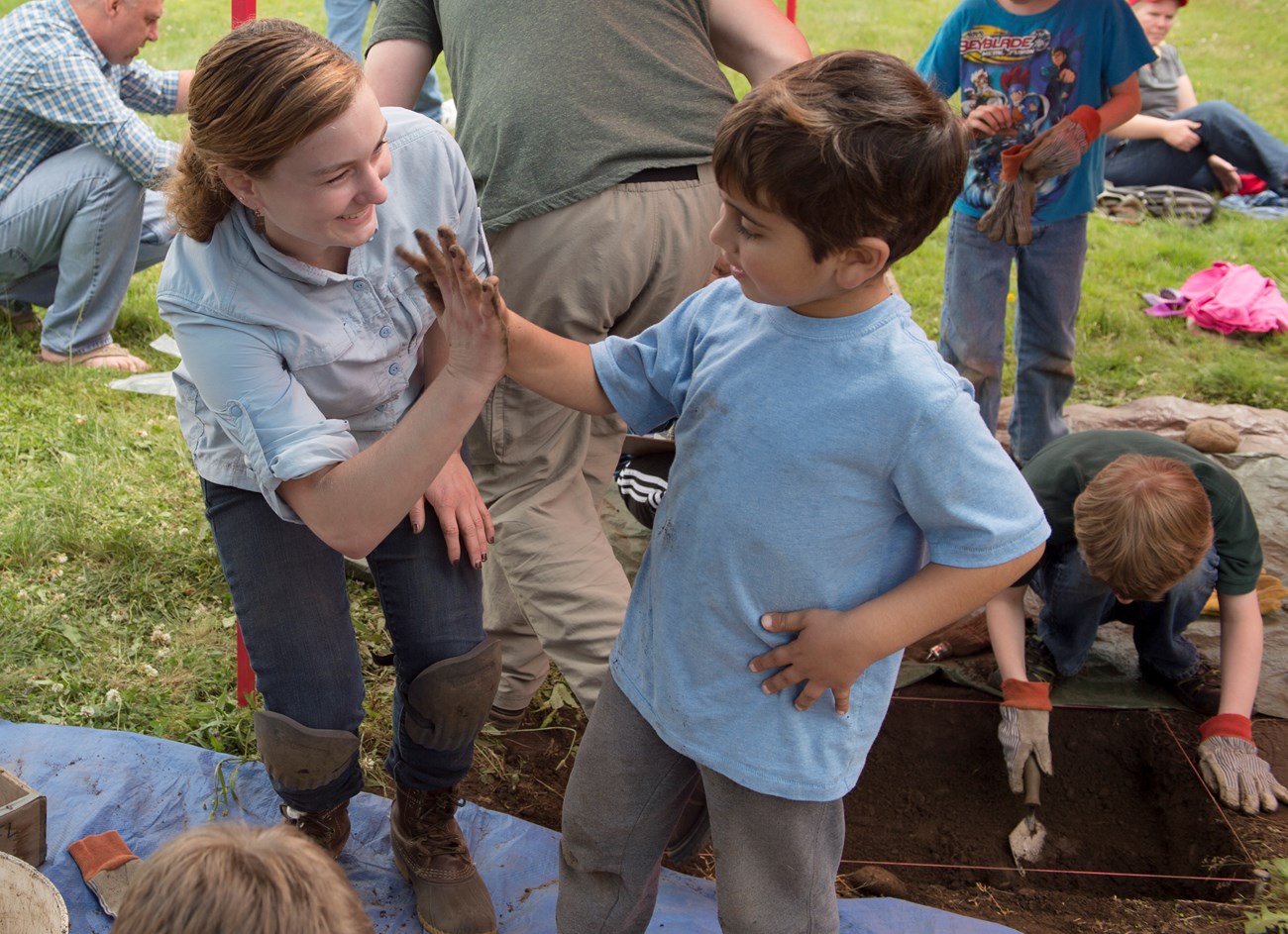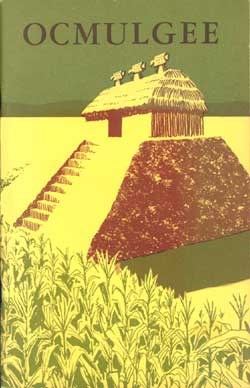Last updated: July 31, 2024
Article
Archeology This Month: Happy Birthday, National Park Service!

Every August 25, we celebrate Founder's Day, the day The Organic Act of 1916 established the National Park Service. It is also a moment to reflect on the significance of archeology to creating the NPS and where we stand today -- a few more wrinkles, some sore knees, and over 80,000 archeological sites and millions of artifacts.
Pour yourself a glass of something, slap together stratigraphic perfection in a peanut butter and jelly sandwich, and reminisce around the fire you've built yourself about some great archeological adventure.
Archeology and the NPS
In the late 19th century, scientists and members of the public became concerned about looting and vandalism of archeological areas. A combination of public advocacy, legislative action, and the professionalization of American archeology brought a series of events leading to the archeological parks we now know, including the Casa Grande archeological reservation in 1892, the Antiquities Act of 1906, the establishment of Mesa Verde National Monument and, finally, the Organic Act of 1916. Upon creation, the National Park Service became steward of 14 national parks, 21 national monuments, and a reservation. Some of these places, such as Casa Grande and Mesa Verde, were known to be archeologically significant, while others are now known to be important.
- The Founding of the National Park Service
- Archeology and Preserving America's Past
- Find a Park: Archeology
Check out these fun retro finds across the NPS website.
Ocmulgee Mounds
Excavations at Ocmulguee, now Ocmulgee Mounds National Historical Park, began in the 1930s by people hired through federal work relief programs who were managed by Dr. Arthur R. Kelly from the Smithsonian Institute. In 1936, President Roosevelt declared Ocmulgee a national monument. The extensive excavations documented the mounds and used artifacts to create cultural chronologies.

Charles Fairbanks joined the project in the late 1930s. He processed the excavation data and collections and reported on the results, which were published in the classic book, Archeology of the Funeral Mound. He also wrote textural pieces interpreting the life and times of Ocmulgee's people. In Hunting 500 Years Ago: To Georgia Indians It Was a Business (1941), Fairbanks imagines,"In the first place, while the woods literally swarmed with game and no hunting license was required, the Indian was not the care-free hunter that might be imagined."
Learn about visiting the national monument in 1956 in its historical handbook, Ocmulgee National Monument.
Natchez Trace
Archeology played a major role in the initial development of the Natchez Trace Parkway in the late 1930s and 1940s. Parkway planners recognized the importance of understanding the prehistory of the region and emphasized the need to locate sites and to perserve them when possible or to preserve data from sites that would be destroyed by construction.
The first surveys, conducted by Moreau Chambers under a New Deal program, focused primarily on Lee County. Archeological excavations began at Natchez Trace in 1938, before it was even considered to become a park.
NPS archeologist Jesse D. Jennings initiated a more extensive survey and testing strategy in 1939. In 1940, he wrote in Digging Up Prehistory An Archeological Survey of the Natchez Trace: "Many people have also become aware of the equally informative, if less glittering, "dirt" archeology now going on in eastern North America, Possibly because romance usually lies across international boundaries, the sweaty diggers in the United States are rarely glamorous figures, nor do their mild adventures rate Sunday supplement space." Le sigh.
John L. Cotter replaced Jennings in 1947. He recorded the excavations at the Bynum, Emerald, and Gordon sites using a new technology - the 8mm movie camera. Some parts of the film record the soils and features, but large sections show the crews at work.
Fort Stanwix
NPS archeologists Lee Hanson and Dick Ping Tsu led a team to locate the remains of the original Fort Stanwix (briefly renamed Fort Schuyler, 1776-1781) beginning in the 1970s. They discovered remnants of the original fort and nearly 500,000 artifacts dating to the 18th, 19th, and early 20th century. Watch the archeologists work, then read the report featuring the post-1781 components, Casemates and Cannonballs.
Transcript
- Duration:
- 1 minute, 23 seconds
Various clips of the archeological excavations that took place in the 1970s to uncover remains of Fort Stanwix. Fort Stanwix National Monument Collection, FOST 22244. (No sound)
More recently, in 2013, NPS archeologists investigated the first 18th century feature found at the site in nearly 40 years. Read more about the research and other finds.
Each of these parks has an important part in the history of NPS archeology, and in fact, archeology continues at all them. Ahead of maintenance or construction activities, or disturbances, or unexpected events (like bad weather), archeology is done to ensure that resources are not destroyed and can be preserved. These projects are driven by the desire to preserve the archeological resources at the park and meet compliance standards of the federal government, but also to ensure that the NPS makes the really cool archeology at its parks available for you to learn from.

